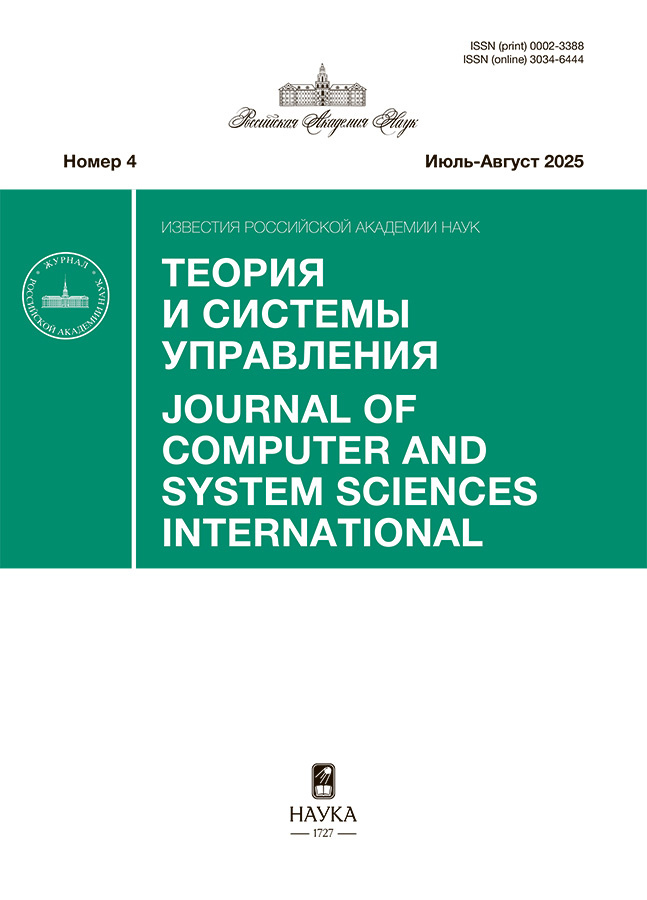Исследования и оптимизация этапа снижения самолетов гражданской авиации в задаче вертикальной навигации
- Авторы: Голубева А.А.1, Куланов Н.В.1
-
Учреждения:
- ФАУ ГосНИИАС
- Выпуск: № 5 (2024)
- Страницы: 160-176
- Раздел: СИСТЕМЫ УПРАВЛЕНИЯ ДВИЖУЩИМИСЯ ОБЪЕКТАМИ
- URL: https://medjrf.com/0002-3388/article/view/681851
- DOI: https://doi.org/10.31857/S0002338824050115
- EDN: https://elibrary.ru/TDSJRY
- ID: 681851
Цитировать
Полный текст
Аннотация
Решение задачи формирования высотно-скоростного профиля полета самолетов гражданской и военно-транспортной авиации на этапе снижения и оптимизации по экономическому критерию проводится с использованием динамической модели движения центра масс в вертикальной плоскости. В модели учитывается изменение массы самолета и систематическая составляющая скорости ветра. Аэродинамические характеристики самолета, его вес, а также высотно-скоростные и дроссельные характеристики двигателей приближены к современному типовому среднемагистральному самолету. Предложена классификация траекторий снижения. Для каждого типа таких траекторий определено множество параметров, однозначно характеризующих их свойства, и значения критериев качества, в которых рассматривается стоимость и затраты топлива. Проведена оценка влияния (релевантности) этих параметров на критерии и свойства траекторий. Сформулирована задача оптимизации этапа снижения с обеспечением заданного времени его выполнения. Получено необходимое и достаточное условия ее реализуемости. Рассмотрен пример решения этой задачи для типового среднемагистрального самолета.
Ключевые слова
Полный текст
Об авторах
А. А. Голубева
ФАУ ГосНИИАС
Автор, ответственный за переписку.
Email: aagolubeva@gosniias.ru
Россия, Москва
Н. В. Куланов
ФАУ ГосНИИАС
Email: kulanov_nv@gosniias.ru
Россия, Москва
Список литературы
- Маркин Н.Н., Чистов М.С. Терминальное управление посадкой пассажирского самолета // Тр. МАИ. 2010. Вып. 41.
- Sang Gyun Park, John-Paul Clarke. Vertical Trajectory Optimization for Continuous Descent Arrival Procedure // AIAA Guidance, Navigation, and Control Conference. Minneapolis, 2012. August.
- Lim Y., Gardi A., Sabatini R., Ranasinghe K., Ezer N., Rodgers K., Salluce D. Optimal Energy-based 4D Guidance and Control for Terminal Descent Operations // Aerospace Science and Technology. 2019. V. 95.
- Гревцов Н.М., Тегин А.В. Формирование управления самолетом для отслеживания траектории в задаче четырехмерной навигации // Уч. зап. ЦАГИ. 2000. Т. ХХХI. № 1, 2.
- Grevtsov N., Dymchenko A. Application of Suboptimal 4-D Navigation Algorithms for Flight Planning and Control Considering Weather Conditions // 29 Congress of the International Council of the Aeronautical Sciences. St. Peterburg, 2014.
- Betts J.T., Cramer E.J. Application of Direct Transcription to Commercial Aircraft Trajectory Optimization // J. Guidance, Control, and Dynamics. 1995. V. 18. № 1.
- Benson D.A. A Gauss Pseudospectral Transcription for Optimal Control // Ph.D. Thesis, Department of Aeronautics and Astronautics, Massachusetts Institute of Technology. Cambridge, 2004.
- Agamawi Y.M., Rao A.V. “CGPOPS: A C++ Software for Solving Multiple-Phase Optimal Control Problems Using Adaptive Gaussian Quadrature Collocation and Sparse Nonlinear Programming” // University of Florida, ACM Trans. Math. Softw. 2020. V. 46. № 3. Article 25.
- Bedrossian N., Bhatt S., Lammers M., Nguyen L., Zhang Y. First Ever Flight Demonstration of Zero Propellant Maneuver Attitude Control Concept // AIAA GN&C Conference. Hilton Head, 2007.
- Прутько А.А. Оптимальные по расходу топлива траектории переориентации крупногабаритных космических конструкций: дис. … канд. техн. наук. Королев, 2021.
- Valenzuela A. Aircraft Trajectory Optimization Using Parametric Optimization Theory // Doctoral Thesis, Universidad de Sevilla, 2012.
- Franco A., Valenzuela A., Rivas D. Optimality of Standard Flight Procedures of Commercial Aircraft // 5th European Conf. for Aeronautics and Space Sciences. Munich. Germany, 2013.
- Голубева А.А., Куланов Н.В. Методика выбора значений параметров этапа взлет самолетов гражданской, военно-транспортной авиации и беспилотных летательных аппаратов // Изв. РАН. ТиСУ. 2019. № 6.
- Голубева А.А., Куланов Н.В. Методика и оптимизация этапа набора высоты в задаче вертикальной навигации самолетов гражданской и военно-транспортной авиации // Изв. РАН. ТиСУ. 2021. № 4.
- Голубева А.А., Куланов Н.В. Исследования и оптимизация этапа крейсерского полета самолетов гражданской авиации в задаче вертикальной навигации // Изв. РАН. ТиСУ. 2022. №5.
- Юревич Е.И. Теория автоматического управления. 3-е изд. СПб.: БХВ-Петербург, 2007.
- Григоров П.Ю., Куланов Н.В. Применение концепции обратных задач динамики в задачах вертикальной навигации // Изв. РАН. ТиСУ. 2016. № 3. С. 141–154.
- Калинина Е.А., Утешев А.Ю. Теория исключения: учеб. пособие. СПб.: НИИ химии СПбГУ, 2002.
Дополнительные файлы


















